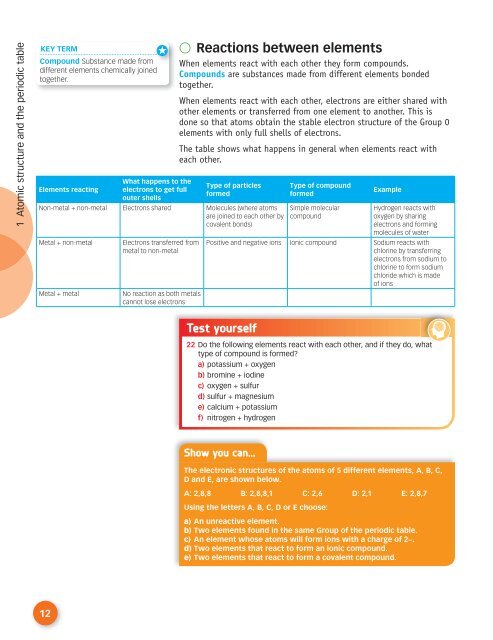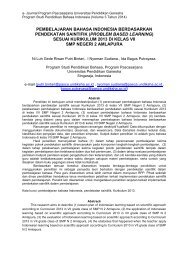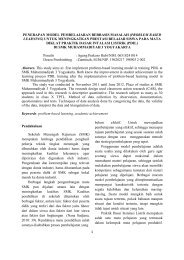You also want an ePaper? Increase the reach of your titles
YUMPU automatically turns print PDFs into web optimized ePapers that Google loves.
1 Atomic structure and the periodic table<br />
KEY TERM<br />
Compound Substance made from<br />
different elements chemically joined<br />
together.<br />
Elements reacting<br />
What happens to the<br />
electrons to get full<br />
outer shells<br />
● Reactions between elements<br />
When elements react with each other they form compounds.<br />
Compounds are substances made from different elements bonded<br />
together.<br />
When elements react with each other, electrons are either shared with<br />
other elements or transferred from one element to another. This is<br />
done so that atoms obtain the stable electron structure of the Group 0<br />
elements with only full shells of electrons.<br />
The table shows what happens in general when elements react with<br />
each other.<br />
Type of particles<br />
formed<br />
Non-metal + non-metal Electrons shared Molecules (where atoms<br />
are joined to each other by<br />
covalent bonds)<br />
Metal + non-metal<br />
Metal + metal<br />
Electrons transferred from<br />
metal to non-metal<br />
No reaction as both metals<br />
cannot lose electrons<br />
Type of compound<br />
formed<br />
Simple molecular<br />
compound<br />
Example<br />
Hydrogen reacts with<br />
oxygen by sharing<br />
electrons and forming<br />
molecules of water<br />
Positive and negative ions Ionic compound Sodium reacts with<br />
chlorine by transferring<br />
electrons from sodium to<br />
chlorine to form sodium<br />
chloride which is made<br />
of ions<br />
Test yourself<br />
22 Do the following elements react with each other, and if they do, what<br />
type of compound is formed?<br />
a) potassium + oxygen<br />
b) bromine + iodine<br />
c) oxygen + sulfur<br />
d) sulfur + magnesium<br />
e) calcium + potassium<br />
f) nitrogen + hydrogen<br />
Show you can...<br />
The electronic structures of the atoms of 5 different elements, A, B, C,<br />
D and E, are shown below.<br />
A: 2,8,8 B: 2,8,8,1 C: 2,6 D: 2,1 E: 2,8,7<br />
Using the letters A, B, C, D or E choose:<br />
a) An unreactive element.<br />
b) Two elements found in the same Group of the periodic table.<br />
c) An element whose atoms will form ions with a charge of 2−.<br />
d) Two elements that react to form an ionic compound.<br />
e) Two elements that react to form a covalent compound.<br />
12





